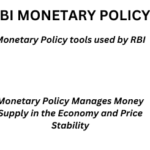BAD AIR QUALITY: STUBBLE BURNING AND WAY OUT

Due to a spike in the number of stubble burning cases in the neighbouring states Delhi. It experience’s bad Air Quality. With the air quality index in the national capital Delhi touching alarming levels, fingers are again being pointed at a recurring problem. Fields are set on fire in harvesting season to get rid of standing stubble before farmers sow their rabi crops.
LEARNING FROM HOME/ WITHOUT CLASSES/ BASICS
Stubble Burning
Stubble burning is intentionally setting fire to the straw stubble that remains after grains, like paddy, wheat, etc., have been harvested; cut cost, due to less income, unable to afford modern costly equipment.
Stubble burning is harmful to health and produces hazardous gases, such as methane, Carbon Monoxide, and volatile organic compounds. It adversely affects human health and renders soil less fertile. The heat produced due to burning leads to a loss of soil moisture and useful microbes.
The challenge of disposing agricultural waste in India is significant. According to IARI, the net cropped area is 141.4 million hectares, and crop residues estimated to be around 600 million tonnes every year, with generation being the highest in Uttar Pradesh, followed by Maharashtra, Punjab and Gujarat.
Several policies proposed to address the issue, mainly in-situ technologies. The failure of these policies show that it is time to try out new multi-pronged approaches to tackle the problem:
The Centre must look into the Indian Agricultural Research Institute’s (IARI) suggestion of converting stubble to manure using a chemical. Incentivizing farmers to shift away from water-guzzling paddy and diversifying cropping patterns is one.
Utilising crop residue in power plants, brick kilns and biomass gasifiers is another. A report by the Council on Energy Environment and Water suggests that increasing farmers’ accessibility to stubble managing equipment. Setting up more custom hiring centres and promoting rental models may work. The government should make hay balers rentals free of cost.
Crop residue can used in different ways. Such as cattle feed, thatched roofs, compost manure, roofing in rural areas, and the paper and pulp industry. Biomass energy, mushroom cultivation, packing materials, fuel, paper, bio-ethanol, and industrial production.
Punjab and Haryana provided incentives to farmers, at Rs 2,500 per acre, For any multi-pronged approach to work, there needs to be coordination between four groups: Farmers, states, Centre and scientists. At present, there seems to a disconnect among all these groups and a lack of political will to find a solution.







0 Comments